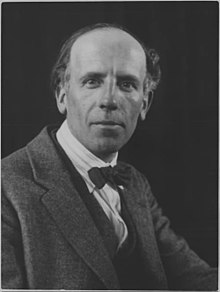Arthur Lismer
| Arthur Lismer | |
|---|---|

Arthur Lismer, 1930
|
|
| Born |
27 June 1885 Sheffield, England |
| Died | 23 March 1969 (aged 83) Montreal, Quebec |
| Nationality | British and Canadian |
| Known for | Painter |
| Awards | Order of Canada |
Arthur Lismer, CC (27 June 1885 – 23 March 1969) was an English-Canadian painter and member of the Group of Seven. He is known for his paintings of ships in dazzle camouflage.
At age 13 he apprenticed at a photo-engraving company. He was awarded a scholarship, and used this time to take evening classes at the Sheffield School of Arts from 1898 until 1905. In 1905, he moved to Antwerp, Belgium, where he studied art at the Academie Royale.
Lismer immigrated to Canada in 1911, settled in Toronto, Ontario and took a job with Grip Ltd.
From 1916-1919 Lismer served as the President of the Victoria College of Art (now NSCAD University).
In wartime Halifax, Lismer was inspired by the shipping and naval activity of the port, notably the dramatically painted dazzle camouflaged ships. This work came to the attention of Lord Beaverbrook who arranged for Lismer to be commissioned as an official war artist. His best-known work from the war years depicted what he observed and learned about in Halifax, Nova Scotia: Mine sweeping, convoying, patrolling and harbor defense. He also did some sketches of the Halifax Explosion.
The collaboration of four artists at Grip gradually evolved into the "Group of Seven", whose work was intended to contribute to the process of giving Canada a distinctive national voice in painting. The group was known for its depictions of the North American wilderness. He also worked with the cadre at Grip.
Arthur Lismer's style was influenced by his pre-Canadian experience (primarily in Antwerp), where he found the Barbizon and post-impressionist movements a key inspiration. Collaborating with the group of artists who would, in 1919, become the Group of Seven, Lismer exhibited the characteristic organic style, and spiritual connection with the landscape that would embody that group's work. That same year, he became the first artistic director of the Hart House Theatre until 1921.
...
Wikipedia
